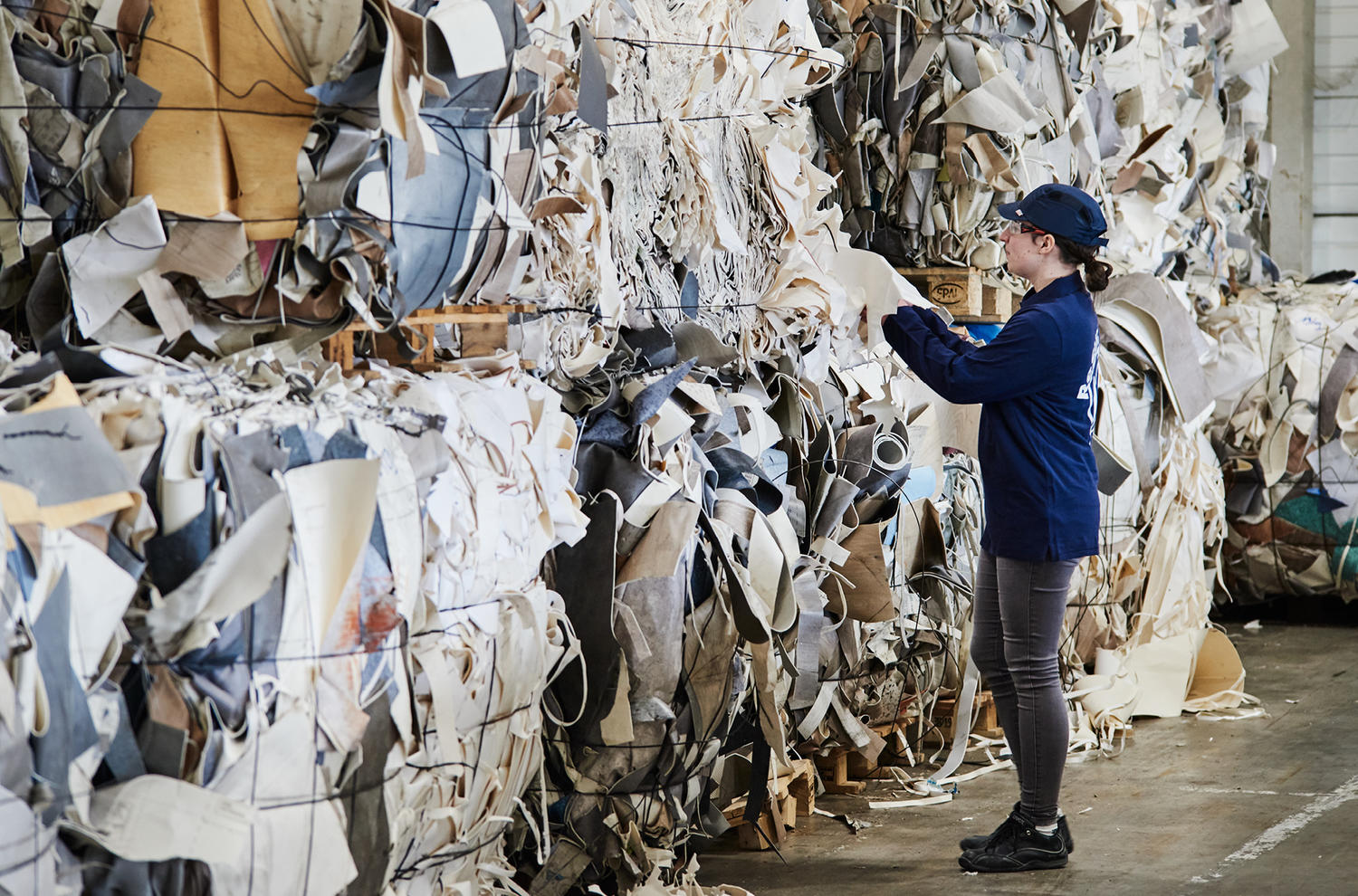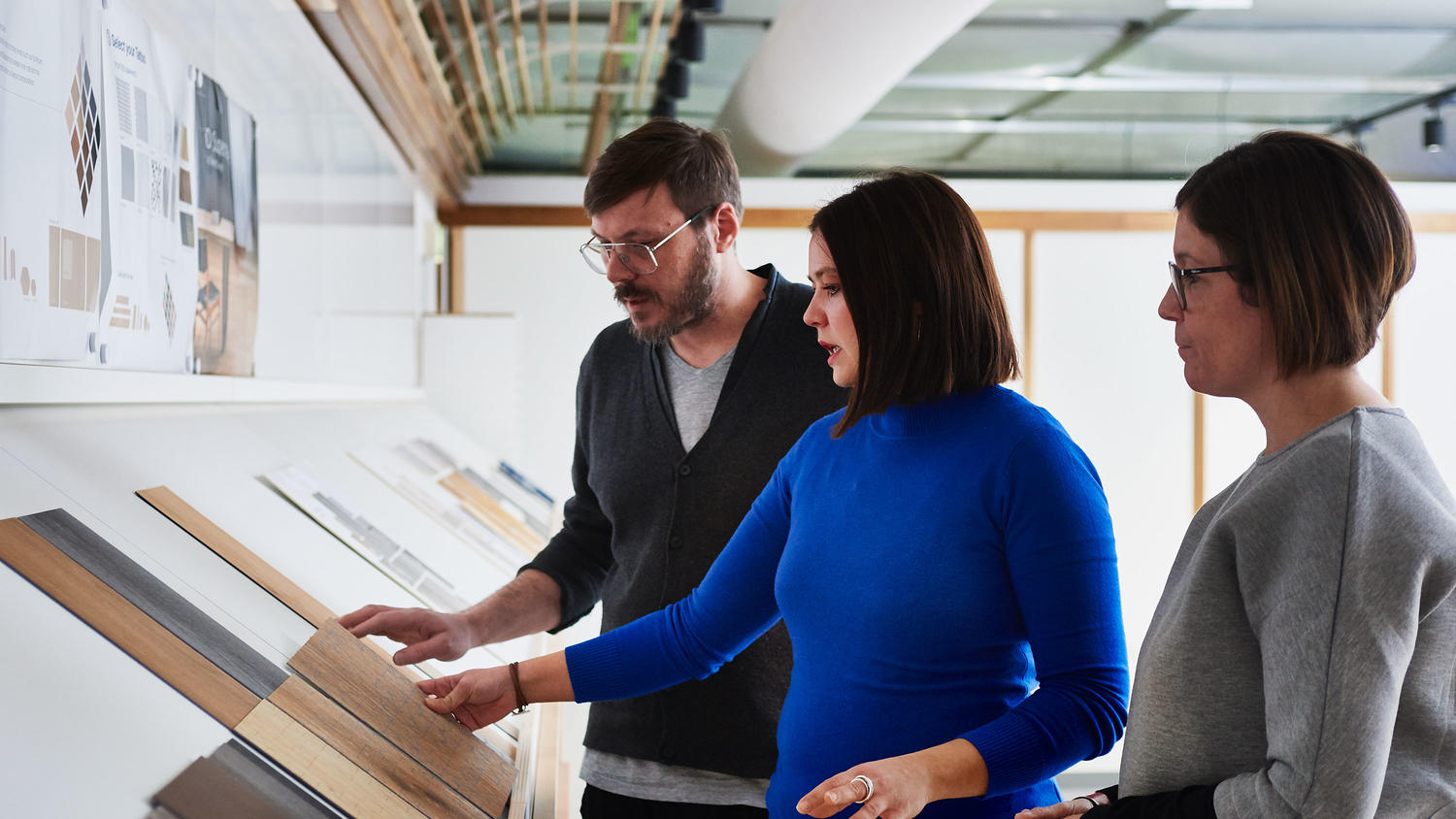Tarkett is one of the world's leading and innovative manufacturers of sustainable floor and wall materials. In 2020, 660 tonnes of floor coverings were collected in the Nordic countries, which are then sent to their recycling plant in Sweden.
Reuse across industries
Some of Tarkett's floors are made up of as much as 85% recycled material. Still, perhaps the most impressive aspect of their operation is the innovative mindset around recycling. They think far beyond the box and collaborate across industries. The filler in the back of their carpet tiles is residual lime from the local waterworks in the Netherlands. Their textile floor comes from the recycling of old fishing nets and other residual material in polyamide. With their industrial partner, old car routes are used to extract PVB, which is an important component of Tarkett's floor, iD Revolution.
ViWe have talked to Tarkett to hear how they got to where they are today, and what it takes to become a leader in circular economy.
In 1996, you started the Nordic region's first plant for recycling waste from vinyl floors. You are still a leading company in environmentally friendly flooring; how did you get here? What were some of the challenges of being first?
The road here has been a lot of testing and learning. Today, the recycling process starts already when the product is designed. The product is developed and designed to be optimized for recycling. We use a lot of resources to find out what kind of content and raw materials we are going to use, and that you can recycle the materials as much as possible on the day the floor is torn out.
The challenges of being first were mainly getting proper systems in place. We had to find out everything ourselves and have an innovative mindset in order to be as environmentally friendly as possible at all levels. How should the materials be collected - should containers, bags or other solutions be used? In addition, we had to find out which machines and systems we needed internally.
Today we have processes where the materials are granulated in small pieces and before they go back into production.
We still do not yet have 100% automatic sorting, so much is still done manually there. We are always working towards improving and streamlining our business to save resources, so the goal is automation to an even greater degree.
What do you want to achieve in the circular economy - what is the dream scenario?
Our goal is that all floors that are torn out can go back into production, and that nothing ends up in incineration or landfill. The goal is to become 100 percent circular there.
Our biggest challenge now is obtaining different materials such as cut and waste. We are working towards getting into projects, that will tear floors, earlier. Unfortunately, we have often entered projects so late that floors have already been sent for incineration and landfill.
A digital platform such as Loopfront will make it easier for companies to plan projects and thus get us on track earlier.
Thus, we can both ensure the right process in connection with tearing out the floors, processing of material and implementation of new, sustainable floors that can easily be recycled in the next round.

What are the climate savings by recycling floor coverings from, for example, a school or an office building of 10,000 square meters?
We joined forces with IKEA in a world-unique circular project when the floors in the large IKEA department store near Stockholm were to be replaced. We then reused 10,000 square meters of old vinyl flooring.
This collaboration saved the globe from emissions of almost 100 tonnes of carbon dioxide.
Different floors provide different climate savings, so we have calculated what our different floors save per square meter. A few examples are:
- Homogen vinyl saves about 9.8 tonnes of CO2 per square meter (98 tonnes of CO2 per 10,000 square meters).
- Linoleum floors save about 5.4 CO2 per square meter (54 tonnes of CO2 for 10,000 sqm).
These calculations include recycling from the old floors, emissions that are avoided from not incinerating, and in addition what one saves by not taking out virgin resources. Such circular activities can be registered in the Loopfront and included in the overall environmental report for all types of projects.
Are you working on reusing floor coverings?
It is difficult to reuse floors. The challenge, and the main reason for this, is that the majority of materials are actually glued, which makes reuse difficult. Some click vinyl, parquet and carpet tiles can be reused. The latter is not glued, but only has a sticky layer. You can lift it up, transport and then reassemble the used carpet tiles at a new location. This, then, presupposes that the substrate is firm, so that it does not come with, for example, spackle residue.
Does your company want to get started with circular economy? Contact us today.




